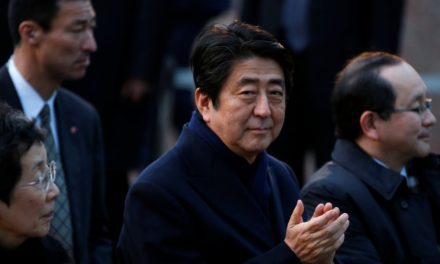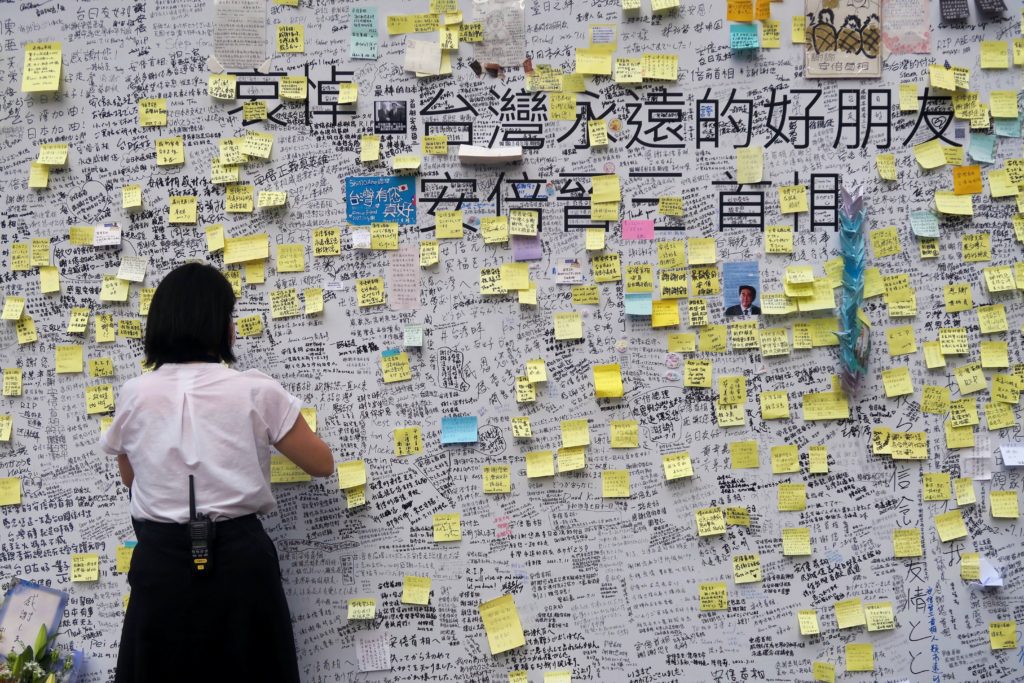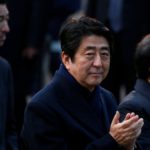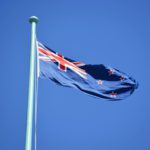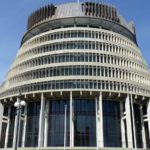
The foreign policy legacy of Shinzō Abe
On 8 July 2022, Shinzō Abe, Japan’s former and longest-serving prime minister, was gunned down while giving a campaign speech in Nara City for the upcoming upper house election. His brutal murder shook the world and shocked Japanese society, not least because gun violence is extremely rare in this country. Abe is only the second prime minister in Japan to receive a state funeral in the post-World War II period, after Shigeru Yoshida, who started rebuilding Japan after the war. Though Abe’s funeral was not without controversy, his state-level funeral was, in many ways, a fitting acknowledgement of his success in projecting Japan’s interests internationally.
Abe heralded a new active style of Japanese diplomacy
As Japan’s youngest post-war prime minister in 2006, Abe promised to promote Japan’s leadership across the globe and in Asia in particular. To that end, Abe depicted Japan as a new role model for the international community in the 21st century. This approach was based on the creation of a value-oriented diplomacy, which emphasised Tokyo’s active promotion of universal values as a new strategic initiative, strengthening partnerships with countries that shared the fundamental values of freedom, democracy, basic human rights and the rule of law.
Abe, NATO and the emergence of Quad
Abe’s activist foreign policy coincided with NATO’s global partnerships initiative. He became the first Japanese prime minister to address NATO headquarters in Brussels and emphasised Tokyo was NATO’s natural partner in sharing and advancing universal values, such as democratic governance and human rights, around the world. Abe was the mastermind behind the Quadrilateral Security Dialogue, or Quad. It is a security cooperation agreement between Japan, United States, India, and Australia to safeguard the maritime commons across the Indian and Pacific oceans, conduct joint naval exercises and defend the freedom of navigation principle in the face of growing Chinese assertiveness in the region.
Abe’s impact on national defence and international cooperation
After assuming office a second time in 2012, Abe’s first overseas trip was to Washington, where he announced Japan was back and looked forward to becoming an ever more trusted player in international affairs. Abe’s administration took steps to strengthen Japan’s national security, which included reinterpreting Article 9 of the Japanese Constitution, which opened up the possibility for the Japan Self-Defence Forces to join the US military, and other partner countries, in combat outside Japan’s own territory.
Abe’s government introduced the highly controversial State Secrets Protection Law, which, among others, enabled the Japanese Government to designate information, gathered in areas such as defence, foreign policy and intelligence-gathering on behalf of a foreign power, a state secret. Abe also established the National Security Council, adopted Japan’s first National Security Strategy, and approved Japan’s National Defence Program Guidelines that acknowledged the changing global and regional balance of power following China’s and India’s (re)emergence, declining US influence, and the growing prospect of a multipolar world. At the same time, Abe’s administration increased Japan’s defence budget for the first time for 25 years with the aim of countering an increasingly assertive China (and responding to North Korea’s progress in developing missiles and nuclear weapons), a development in Japan’s defence strategy that was dubbed ‘proactive pacifism’.
Abe’s vision of a Free and Open Indo-Pacific and relations with China
Abe’s goal of closer co-operation between Japan and like-minded countries was reflected in his vision of a Free and Open Indo-Pacific. This change in terminology served to re-define the strategic importance of the Asia-Pacific. One of the few countries expressing a strong opposition to Abe’s initiative was China. Nevertheless, reciprocal visits between Abe and Chinese Premier Li Keqiang after a seven-year hiatus culminated in the first ever meeting between Abe and President Xi Jinping in 2018. But hopes for a thaw in the troubled Japan-China relationship foundered on the deep and persisting tensions over different interpretations of bilateral history, disputed maritime territories, and what both sides considered as the other’s military expansion.
Regional economic and security cooperation
After the new Trump administration’s withdrawal from the Trans-Pacific Partnership (TPP) deal in early 2017, the Abe government played a critical role in salvaging what was called the Comprehensive and Progressive Agreement for Trans-Pacific Partnership(CPTPP). This multilateral free trade agreement helped Tokyo’s influence expand across the Indo-Pacific and made Japan a key player in maintaining regional stability. In addition, Abe’s government signed a multilateral trade agreement with the European Union that had unsuccessfully pursued the Transatlantic Trade and Investment Partnership (TTIP) with the US. The Abe administration had also deepened engagement with existing regional groups such as APEC, ASEAN, ASEAN Plus Three and the ASEAN Regional Forum.
Abe’s foreign policy unfolded in the context of increasing Japan–China and United States–China rivalry. This forced Japan to continue to invest heavily in the creation of a regional security architecture, coupled with robust economic networks across the Indo–Pacific. By partnering with a rising power in India and a middle power like Australia, the Abe Government brought together a group of strategically like-minded countries to counter the sense of threat generated by China’s rise in the Indo-Pacific region.
Limitations of Abe’s values-oriented diplomacy
Ironically, despite being promoted as values-oriented, Abe’s foreign policy was, in practice, downplaying democratic values and human rights. Abe had little, if anything, to say about democracy protests in Hong Kong, the mass incarceration and forced ‘re-education’ of Uyghurs in Xinjiang, or the ethnic cleansing of Tibetans. These silences may have further emboldened Beijing. Moreover, Abe never openly criticised former Philippine President Duterte’s illegal domestic war on drugs, spoke out to protect ethnic Papuans’ rights in Indonesia, or took action against the Rohingya ethnocide, to name a few but crucial human rights violations in Japan’s ‘backyard’. His administration’s continued reluctance to squarely address Japan’s historical war crimes also made it difficult to pursue a foreign policy that was supposed to champion liberal democratic values.
Abe’s legacy – Japan’s growing international confidence
Abe’s legacy for Japanese foreign policy is substantial. While Tokyo’s reliance on the US alliance is likely to remain a cornerstone of Japanese foreign policy, it is also clear that, thanks to Abe’s leadership, the country became more confident about using its economic and technological capabilities as well as its significant soft power in the international arena. Currently, Japan conducts a more independent and proactive foreign policy with strengthened and expanded regional alliances, and demonstrates leadership in the Indo-Pacific.
The Abe administration’s success in forging international trade deals as well as building closer cooperation with like-minded countries elevated Japan’s diplomatic and economic status across the Indo-Pacific and beyond, and generated a new level of confidence in Japan’s foreign policy. Abe left office in September 2020, but he continued to be regarded as a highly influential figure in shaping Japan and its place in the world as was evidenced by his state-organised funeral last week.
Balazs Kiglics is a Teaching Fellow in the Languages & Cultures Programme and Co-ordinator of the Otago Foreign Policy School and the National Security School, University of Otago, Dunedin, Aotearoa New Zealand
Balazs Kiglics writes regularly for Discerning Eyes
To learn more, visit his Profile
Image: Philippe Yuan
Source: Unsplash

